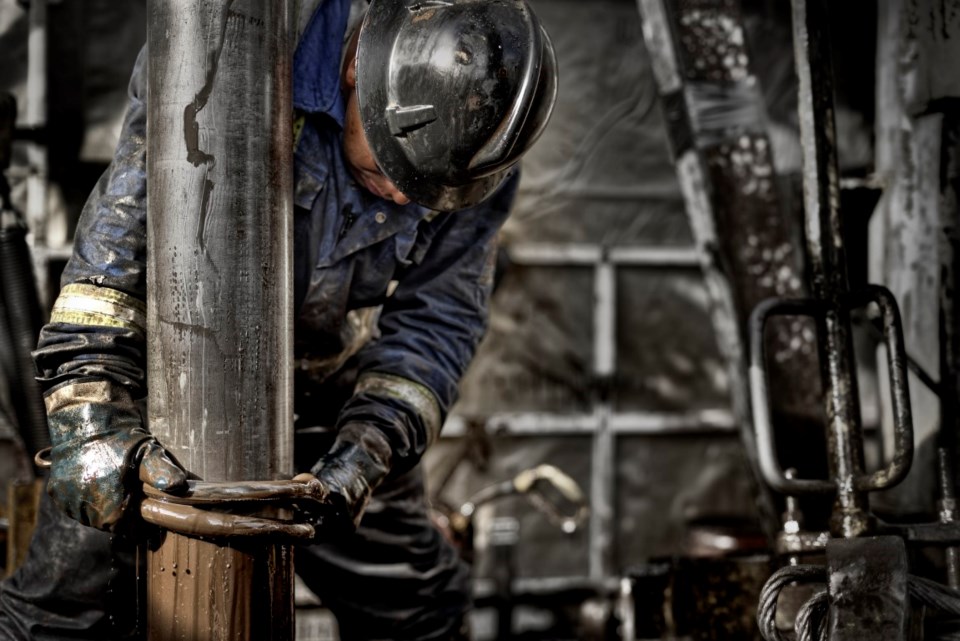When Nicole Romanow looks at drilling rigs from 30 years ago, she’s impressed by the change and innovation that has occurred in Canada’s oil and gas industry – and what is yet to come.
That’s because as team lead for sustainability strategy at Canadian drilling company Ensign Energy Services, she understands the level of equipment in the field today and what’s on the way tomorrow.
It’s no more rig workers manually hauling chains around. It’s high-tech, highly-automated machinery geared for optimum performance. And technology is increasingly targeted to reduce greenhouse gas emissions.
“To see the high-spec rigs we have today and the rig automation, the step-change in drilling performance, emissions management and land stewardship is remarkable,” Romanow says.
While Canada’s oil sands sector often makes news for innovations that reduce environmental impacts like emissions per barrel and water use, similar efforts by the ‘conventional’ industry – basically everything that’s not the oil sands – can get overlooked, says Mark Scholz, CEO of the Canadian Association of Energy Contractors (CAOEC).
“On the conventional oil and gas side, there’s a lot happening that might not necessarily make it to the headlines,” he says.
“And the conventional side of the business, that’s where the vast majority of the employment is coming from, stretching across Western Canada.”
Conventional oil and gas mainly centres on drilling, whereas the oil sands is more like building large-scale manufacturing facilities.
Every active drilling rig in Canada generates about 220 direct and indirect jobs, oil and gas labour information provider PetroLMI.
About 5,400 wells are expected to be drilled in Western Canada in 2022, the Petroleum Services Association of Canada (PSAC). This is up from 4,650 wells in 2021 but well below the record 11,475 wells drilled in 2013.
Rigs are being outfitted with new technology to reduce emissions, in a highly competitive business that doesn’t allow for much flexibility on costs.
“We think that long-term, lasting sustainability is about not only saving on emissions but also improving performance. Those are the solutions that are economic and have staying power,” Romanow says.
“From the service side, it’s always about how you can provide a unique edge that way.”
Faster drill times
Drilling has already come a long way in reducing emissions, Scholz says, primarily because of new technologies that allow rigs to run much more quickly and efficiently.
“Wells that 15 to 20 years ago took us 40 days to drill now take us five days to drill, because we have rigs that have better horsepower and better pumping capabilities,” he says.
“We have better downhole equipment and drill bit technology, and we have directional tools that allow us to basically change the direction of the bit so that we can do horizontal drilling and capture more of the resource play that we’re drilling through.”
Fewer days on location means less time using the rig’s engines or consuming energy to run equipment. Scholz says this reduces emissions by about 85 per cent compared to older technology.
Alternative fuels and batteries
Replacing diesel fuel is the name of the game for lowering emissions on drilling rigs, and that’s being done through dual-fuel natural gas/diesel generators, natural gas generators, connecting directly to the electrical grid, and, more recently, battery energy storage systems.
“Batteries are the hottest topic as of late,” says Ashley Connolly, who runs marketing and business development for Canadian contractor Precision Drilling’s suite of environmental technology solutions.
“When coupled with diesel, natural gas, or dual-fuel generators, a battery energy storage system reduces the number of generators online and increases the average load on the engines, allowing them to run more efficiently.”
Precision is part of an with Caterpillar and major natural gas producer Tourmaline Oil Corp. using a mobile natural gas generator and battery system. The project has $3.2 million in funding from Emissions Reduction Alberta.
The system is projected to save 3,800 tonnes of emissions per rig per year. With the proposed commercialization plan, Tourmaline estimates a reduction of 11.3 million tonnes of CO2 equivalent emissions by the end of 2050.
Engine automation
Automation has been a significant improvement for Canada’s oil and gas drillers, and new applications are helping reduce emissions, Connolly says.
New engine automation technology continuously monitors rig power demand and compares that against the available engine power, for example, the number of engines online.
With new technology, engines are automatically started or stopped to have only the required number running, which optimizes efficiency, reducing fuel consumption and associated GHG emissions.
Romanow says automation systems like this allow rig operators flexibility to switch energy source based on conditions.
“They’re pulling from the most efficient source of energy from a performance perspective, as well as from an emissions perspective,” she says.
The future
Beyond batteries and the benefits of using power from the electrical grid, Connolly expects that the future will involve more new technologies like carbon capture. But the application will require different systems than those used at an oil sands project or fertilizer plant.
“Carbon capture projects have been focused primarily at the facility level or stationary areas, not mobile equipment,” she says.
“We’re working on developing that. We are also exploring how fuel cell technology and hydrogen as a fuel source can be implemented into drilling operations.”
Scholz says the drilling industry’s commitment to innovation and lower environmental impacts should help recruit the many new workers needed as global oil and gas demand continues for decades to come.
“This is very much a high-tech, highly-innovative industrial process that we’re involved in that takes the environment very seriously,” he says.
“It’s going to require the special skill sets from a new generation that’s going to help us really deploy these technologies and ultimately help us design and implement new ones.”
Deborah Jaremko is director of content for the Canadian Energy Centre, an Alberta government corporation funded in part by taxes paid by industry on carbon emissions.
©




